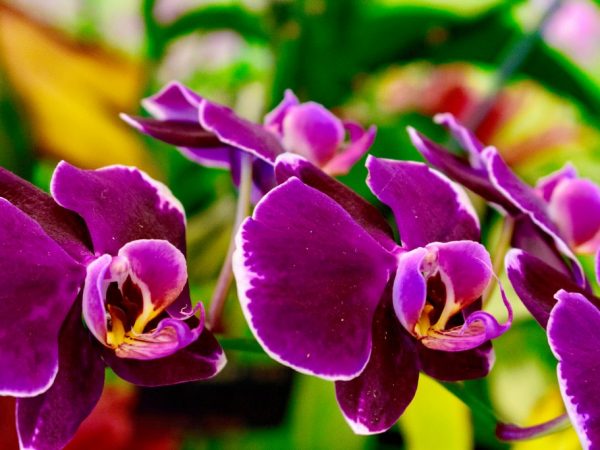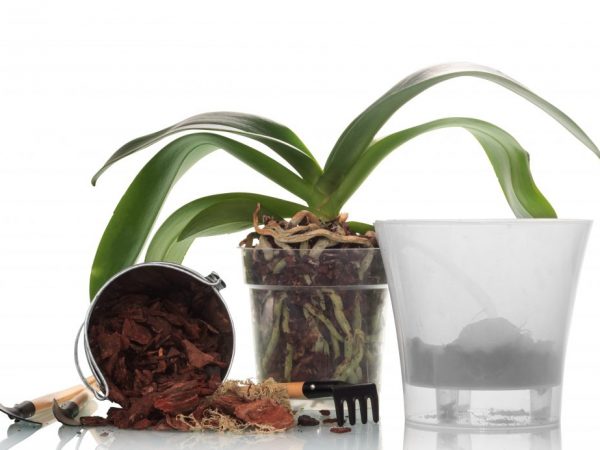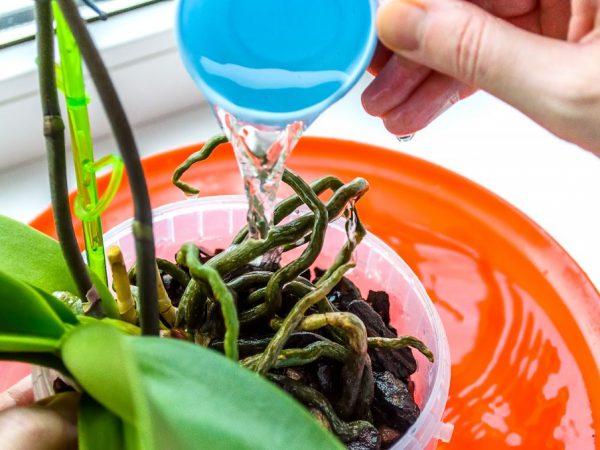Planting orchid bulbs from Vietnam
Planting an orchid bulb from Vietnam and growing it remains a topical issue for orchid lovers who intend to bring such a souvenir from a trip to an Asian country. It is difficult to grow this type of bulbs.

Planting orchid bulbs from Vietnam
Description and types of Vietnamese orchids
In Vietnam, there are 2 types of orchids: aerial and aerial. Aerial organisms are found on trees, growing roots in them, aboveground ones - on accumulations of humus or debris. For papiopedilum, several varieties are characteristic, differing in the shape of the petals and flowers, the color and size of the inflorescences.
Names of orchid species from Vietnam:
- Vietnamese. Typically a wide variety of petal flowers, which have a kind of pocket that looks like a small shoe.
- Siamese. The species is characterized by the formation of only one flower on a peduncle of green-lilac color. In this case, one lower petal is brown.
- Bearded. A variety of unusual appearance: burgundy flowers have a light border, leaves are light green with dark spots that can be perceived as a disease.
- Nice. The flowers are large (up to 10 cm in diameter), orange-green in color with greenish veins and black specks.
- Appleton. Paphiopedilum with a mild, pleasant aroma typical of a violet-brown color.
- Helena. The flowers are yellow and have a waxy bloom. This species blooms for 3 months a year.
- One-flowered. A feature of the species is faster flowering than other varieties. On a short peduncle, only 1-2 flowers are formed.
Landing
To properly plant an orchid from Vietnam and grow a beautiful plant at home, you need to adhere to many rules and take into account all factors in the care process.
- When choosing a vessel for planting a bulb, give preference to a transparent pot, container or small food bucket. It is better to plant the flower in a transparent pot, because the roots of the plant must receive light.
- For orchids that are picky about moisture levels, add several types of drainage to the planting substrate to regulate the amount of water in the soil and increase the weight and stability of the vessel. Expanded clay, pottery shards, small and medium stones are used as drainage material.
- The substrate for orchids consists of the following components: coniferous tree bark, sphagnum moss, fern frond, pumice stone, expanded clay, coconut chips, rockwool fibers, etc.

When choosing a vessel for planting a bulb, give preference to a transparent container.
To plant a flower, the drainage layer is covered with a substrate, which is then watered. After that, the tubers are placed in pots, usually one in each. Orchid bulbs from Vietnam should be planted so that their lower parts are slightly submerged in the soil, correctly - by about 1 cm. Tuberous offspring need strong support and therefore they must be planted after the support peg is installed.Immediately after planting, the young plant is placed in a lighted place for germination, which will allow to grow a strong root system of the bulb.
Growing and care
It is recommended to grow pafiopedilum when creating tropical conditions close to it. The temperature should not go beyond 17 ° C-30 ° C, and the optimum humidity level is 50% and above. Solar radiation should not be too saturated, otherwise the plant may get a thermal burn, so shade it in the summer.
Caring for an orchid in general is not difficult.
Cultivation also includes fertilization of flowers. 1 p. per month feed the orchid with a specialized complex. Watering, as a rule, is carried out as it dries, since the increased flow of water leads to decay of tissues.
A small warm shower for papiopedilum will not be superfluous, after which it is imperative to give time for excess moisture to escape. Watering is carried out in the morning or daytime, so that the soil dries up by night. In summer, watering is done daily, in winter - once every few weeks.

The optimum temperature is 17 ° C-30 ° C, and the humidity level is from 50% and above
Transfer
The transplant depends on the type of indoor orchid and its typical bulb. Bulbous varieties must change the substrate at certain intervals, because such papiopedilum quickly renders the soil unusable, depleting its resources. If the substrate is based on sphagnum, then the plant is transplanted every 2 years, if on the bark - once every 3 years.
It is better to transplant in the spring, when plants are actively growing. In addition, the plant needs a transplant if it is infected with parasites or decay of the roots as a result of improper watering.
Conclusion
Bringing an onion is only half the battle, because when growing an exotic plant at home, you must follow proper care and maintain stable environmental conditions.


